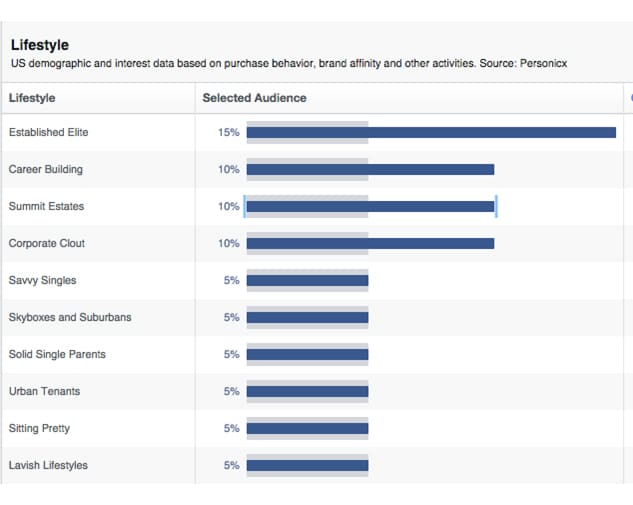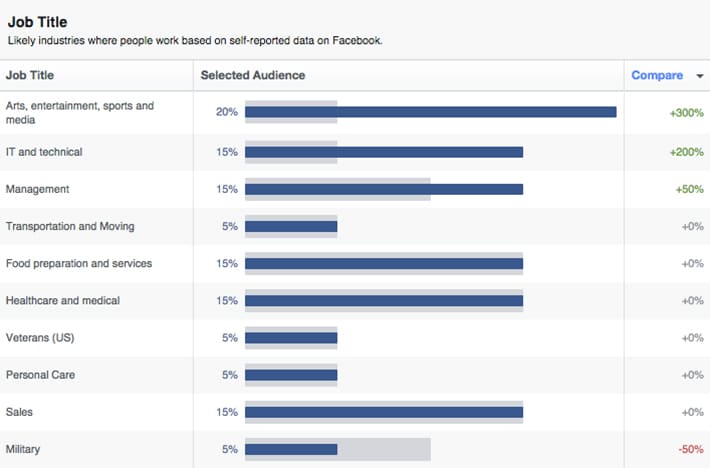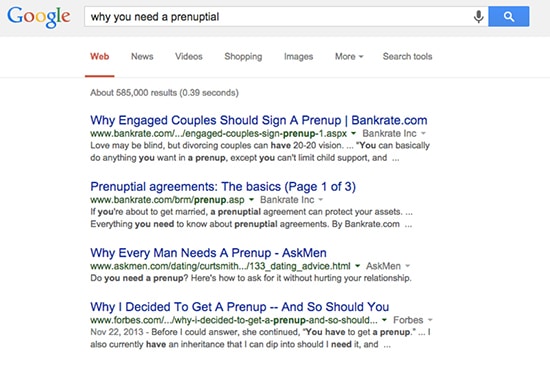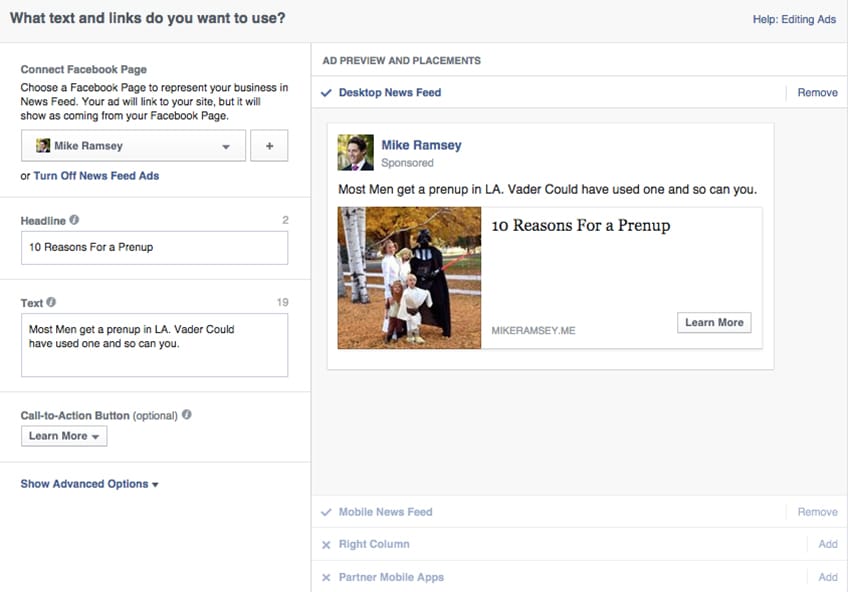For lawyers, using Facebook for marketing is a tough nut to crack. And Facebook has been making it harder to reach your fans on its platform with some recent steps. Many brands are saying that their reach is getting smaller and smaller due to changes in the news feed algorithm. What can you do to still make use of the platform as a law firm? Here are some tips.

Don’t send traffic away from your website unless you have a good reason. Facebook is not that reason.
2. Research the demographics you want to target on Facebook. Before doing much of content creation and marketing, you need to understand the client persona you want to target. Facebook has a great tool for looking at data called Audience Insights. Let’s say I am a family lawyer and want to focus on prenups. I can set up a search in Audience Insights for men, over the age of 21, who are currently engaged, who live in Los Angeles, and who make over $75,000 a year. As many as 4,500 people meet that description. Beyond that, here are some Insights stats that tell you more about them.
Data like this can help you better understand the people in the group, whether they might be interested in what you have to offer, and how best to reach them.
3. Create worthwhile content on your website and blog. Once you’ve made sure you are targeting the right audience — and that there are enough people to focus on — you need a message and content that will appeal to them. This is the hardest step. You can start by looking to the Internet for inspiration.
Once you have an idea for something you think you can do smarter or bigger, get to work. Maybe you settle on an article or even a video on “10 Reasons Every Man Needs a Prenup in Los Angeles.” Write your content and pack it with relevant information and images.
4. Use ads to promote content on your website. On the Audience Insights page, you can click a button in the right-hand corner to create a Facebook ad. In step one, you’ll choose the objective for your campaign, as shown in the screenshot below. Be sure to choose the option to send people to your website.
Next, build an ad that will show up in the news feeds of your target group. Be sure to remove the Right Column sidebar ad option.
5. Try to get people to share your content. Once your ad is running and people from your demographic start coming to your website, you want them to share your content on their own Facebook news feeds. While Facebook might block updates coming from your page, they would love to share content you created via users who are sharing it organically from their personal account, with their own group.
It is extremely important to make social sharing icons easily visible on your website or blog posts, so that readers are more likely to click and share. A study by Garrett Moon says the top horizontal or floating left vertical of a post is the best place for sharing icons. We have had experiences where we have purchased around 150 visitors to a piece of content but had thousands of visitors from the organic sharing that took place once people started coming to the website.
Always Aim to Capture Email Addresses
Remember, the one thing you do own is your email list. So, instead of a Facebook “like,” put your energy into getting an email address that you can add to your newsletter distribution list and include in your email marketing. Email marketing is extremely powerful, and services like MailChimp make it extremely easy to add an email capture form to your website. If you need more convincing, check out MailChimp’s benchmarks.
For Facebook to be valuable for your marketing, you need to stop focusing on daily updates on a page that you don’t own. Instead, start creating shareable content on your website and convince people to do the social sharing for you.
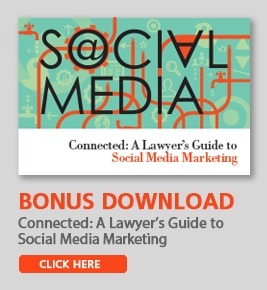
Free Download
For more good tips on leveraging social media in your marketing, download our e-zine, “Connected: A Lawyer’s Guide to Social Media Marketing.”




